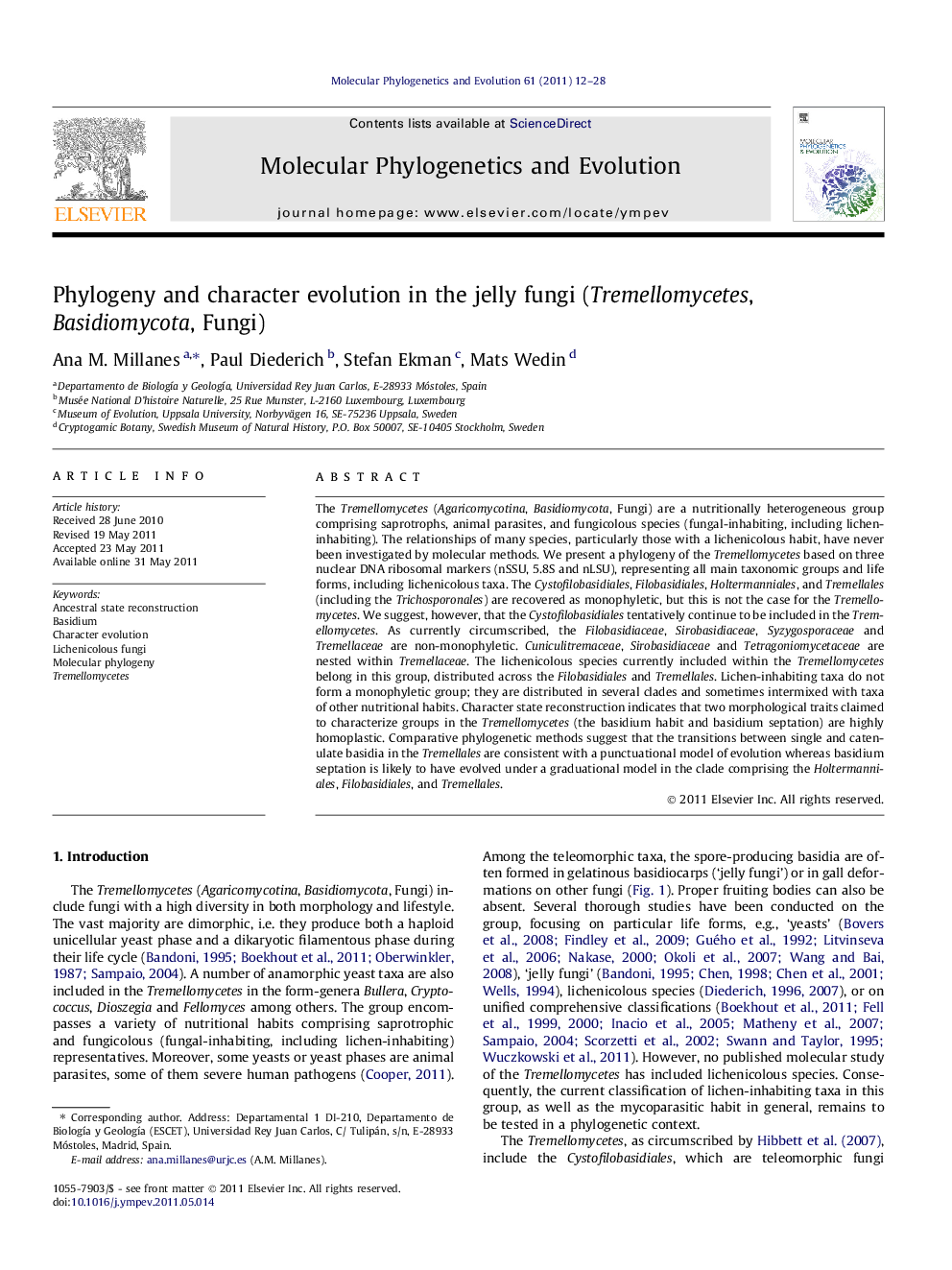| Article ID | Journal | Published Year | Pages | File Type |
|---|---|---|---|---|
| 5920438 | Molecular Phylogenetics and Evolution | 2011 | 17 Pages |
The Tremellomycetes (Agaricomycotina, Basidiomycota, Fungi) are a nutritionally heterogeneous group comprising saprotrophs, animal parasites, and fungicolous species (fungal-inhabiting, including lichen-inhabiting). The relationships of many species, particularly those with a lichenicolous habit, have never been investigated by molecular methods. We present a phylogeny of the Tremellomycetes based on three nuclear DNA ribosomal markers (nSSU, 5.8S and nLSU), representing all main taxonomic groups and life forms, including lichenicolous taxa. The Cystofilobasidiales, Filobasidiales, Holtermanniales, and Tremellales (including the Trichosporonales) are recovered as monophyletic, but this is not the case for the Tremellomycetes. We suggest, however, that the Cystofilobasidiales tentatively continue to be included in the Tremellomycetes. As currently circumscribed, the Filobasidiaceae, Sirobasidiaceae, Syzygosporaceae and Tremellaceae are non-monophyletic. Cuniculitremaceae, Sirobasidiaceae and Tetragoniomycetaceae are nested within Tremellaceae. The lichenicolous species currently included within the Tremellomycetes belong in this group, distributed across the Filobasidiales and Tremellales. Lichen-inhabiting taxa do not form a monophyletic group; they are distributed in several clades and sometimes intermixed with taxa of other nutritional habits. Character state reconstruction indicates that two morphological traits claimed to characterize groups in the Tremellomycetes (the basidium habit and basidium septation) are highly homoplastic. Comparative phylogenetic methods suggest that the transitions between single and catenulate basidia in the Tremellales are consistent with a punctuational model of evolution whereas basidium septation is likely to have evolved under a graduational model in the clade comprising the Holtermanniales, Filobasidiales, and Tremellales.
Graphical abstractDownload full-size imageHighlights⺠The lichenicolous taxa in the Tremellomycetes clearly belong within this group. ⺠Basidium habit and basidium septation are homoplastic in the Tremellomycetes. ⺠Changes in the basidium habit are consistent with a punctuated mode of evolution. ⺠Weak evidence suggests graduational evolution in the basidium septation.
